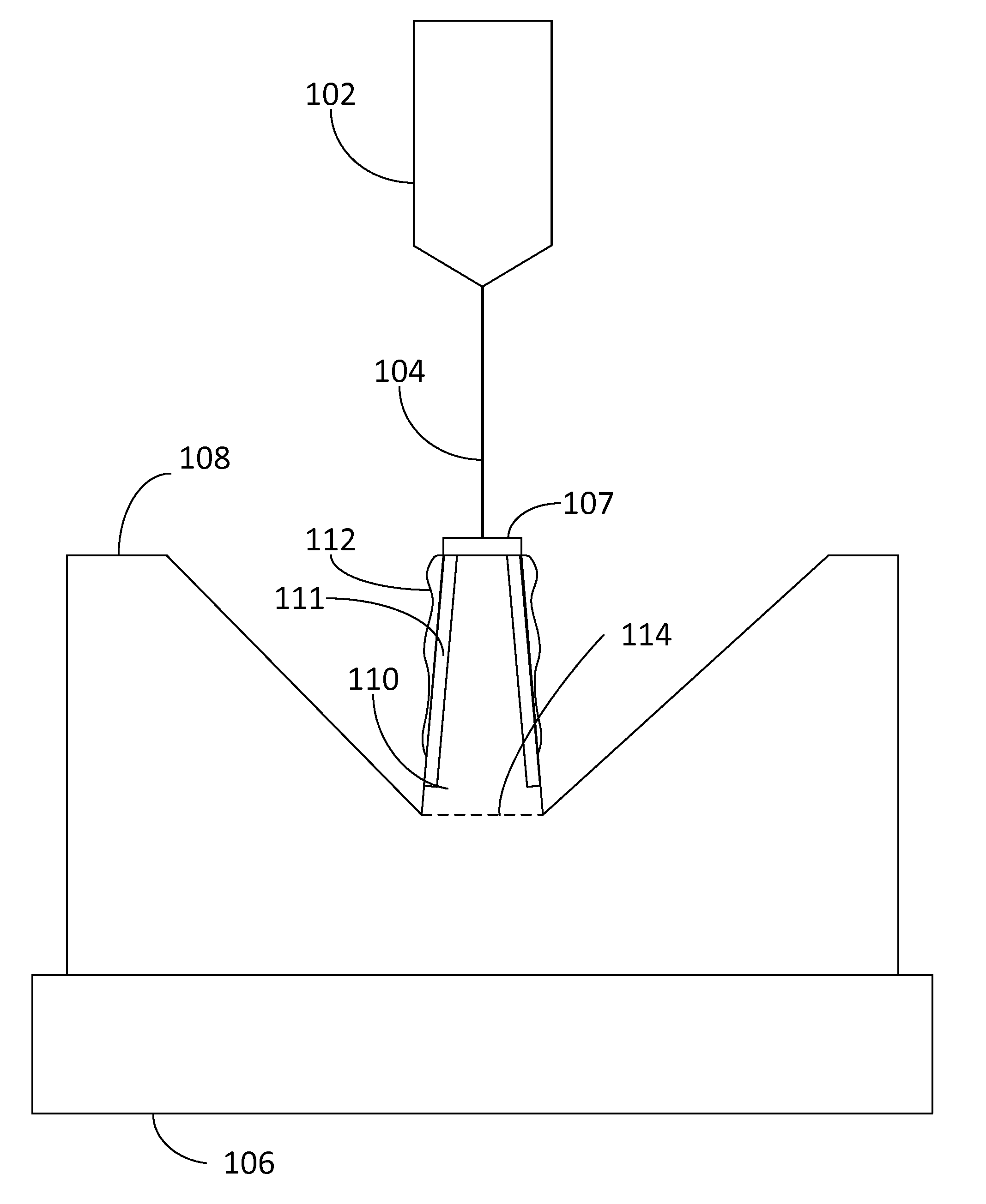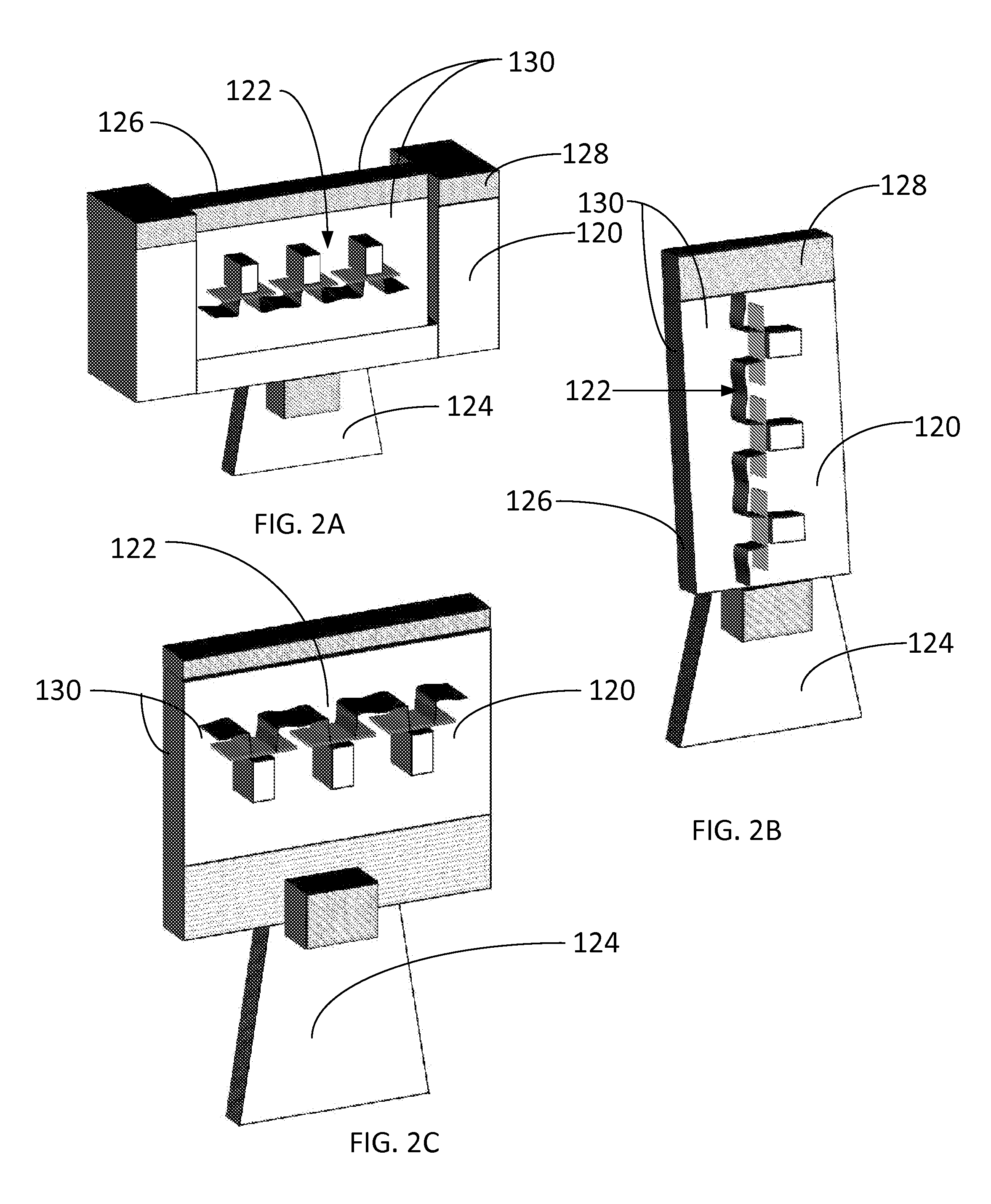Fabrication of a Malleable Lamella for Correlative Atomic-Resolution Tomographic Analyses
a tomographic analysis and malleable technology, applied in the field of sample formation, can solve the problems of preventing optimal material analysis, catastrophic sample fracture, artifacts in data, etc., and achieve the effect of improving correlative s/tem and apm analysis
- Summary
- Abstract
- Description
- Claims
- Application Information
AI Technical Summary
Benefits of technology
Problems solved by technology
Method used
Image
Examples
Embodiment Construction
[0024]In accordance with some embodiments, a lamella suitable for S / TEM analysis is prepared using a focused ion beam or other method. After optional observation on S / TEM, material is deposited onto the thin lamella to form a thicker structure with the lamella embedded. The thicker structure is then milled to form a needle-like structure for atom probe microscopy. Thus, following this general sequence, a region of interest extracted from a bulk sample can be optimized for S / TEM and then separately optimized for the APM analysis. The embedded lamella sample structure also shows improved field evaporation characteristics compared to the traditional cone- or needle shaped structure having the region of interest and surrounding original matrix material largely intact relative to their positions in the bulk substrate. The improved data from the two sources can be more easily correlated thus improving the accuracy of the three-dimensional reconstructed microstructure and composition of th...
PUM
| Property | Measurement | Unit |
|---|---|---|
| thickness | aaaaa | aaaaa |
| thickness | aaaaa | aaaaa |
| thick | aaaaa | aaaaa |
Abstract
Description
Claims
Application Information
 Login to View More
Login to View More - R&D
- Intellectual Property
- Life Sciences
- Materials
- Tech Scout
- Unparalleled Data Quality
- Higher Quality Content
- 60% Fewer Hallucinations
Browse by: Latest US Patents, China's latest patents, Technical Efficacy Thesaurus, Application Domain, Technology Topic, Popular Technical Reports.
© 2025 PatSnap. All rights reserved.Legal|Privacy policy|Modern Slavery Act Transparency Statement|Sitemap|About US| Contact US: help@patsnap.com



